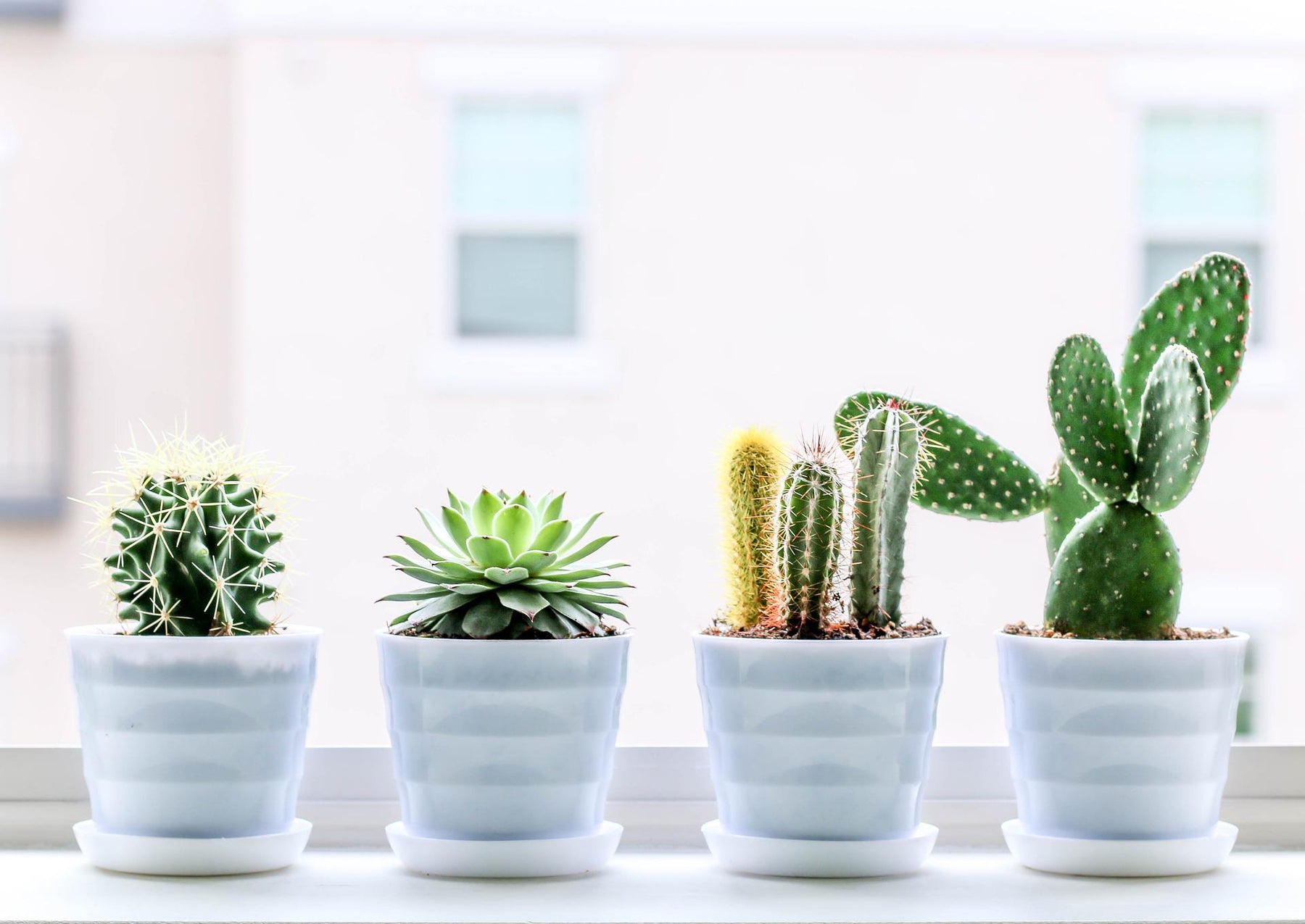
How to Prepare and Care for Your Succulents and Cacti this Winter
Cacti and succulents are great low-maintenance plants that brighten up our homes, even during winter’s darkest days. Cacti are collectible and are ideal for nice, sunny windowsills as are many of their succulent counterparts. With the right care, they’ll be just fine throughout the long, cold Canadian winter.
As we are in Canada, most of you will be caring for indoor cacti. However, there are some rustic cacti that will survive a good Canadian winter outside. In this article, we’ll explain how to care for both indoor and outdoor cacti. We’ll also suggest a few rustic cacti that are winter-tolerant. The same basic rules would apply to succulents.
So how do you care for cacti during Canadian winters? As a general rule, for indoor cacti, you’ll need to maintain a comfortable temperature, water about once a month, and allow adequate sunlight. Outdoor cacti won’t need to be watered but should be covered with burlap to protect them from the cold.

Preparing Your Cactus and Succulent Before Winter Comes
As winter approaches, you need to be sure your plant is strong and healthy. Cacti and succulents need to be well-equipped to deal with the colder weather. Here are a few ways to make sure your plant is prepared to take on the season ahead:
- Make sure your cactus or succulent is planted in nutrient-dense and well-draining soil. You can use our cactus and succulent soil which is good for both jungle and desert cacti.
- In September and October, fertilize your plant with a fertilizer that is rich in nutrients and minerals. Consider Schultz 2-7-7 Cactus Liquid Plant Food. It’ll give your cactus and other succulents a boost of strength to take on the coming winter.
How to Make Sure Your Indoor Cactus Stays Healthy During Winter
We all know cacti love heat and low humidity, but here in Canada, we get cold winters with high humidity. How then, do we ensure their health in the winter? Most cacti and succulents go dormant by the time fall comes around, meaning they will stop growing when temperatures and daylight drop. Dormancy allows these plants to rest, form their buds for flowering and prepare for growth the following summer. In winter, these plants generally need a little light and occasional watering to keep them going.
Not all cacti need a dormancy period. Desert cacti will benefit from a dormancy period but tropical cacti like rhipsalis, schlumbergera or epiphyllum, do not need a dormancy period.
Caring for indoor cacti in winter is easy but you'll need to make some adjustments to the usual routine. Your home’s temperature will generally be satisfying for the cactus and if there is a lack of sunlight, you can augment with grow lights. Here are three things to manage in order to give your cacti and succulents a cozy, restful winter:
Watering
After summer, try to reduce watering gradually. If you were watering your cacti once every 2 weeks in summer, reduce to once every 3 weeks in early fall and then only once every 4-6 weeks in winter. Never stop watering dormant cacti altogether – this will lead to root loss and stunt their growth. Light watering in winter will help to keep your cactus healthy. Make sure to keep water off the body of a cactus or leaves of a succulent. It can contribute to rot and fungal diseases. Of course, always avoid over-watering and make sure the soil is completely dry before watering. Too much water will lead to root rot.
Also, be sure that the water is draining properly. This means using proper cactus soil and preferably a pot with drainage holes. Poor drainage is just as bad as overwatering for a cactus. Do not fertilize your cactus in winter and don’t use cold water. Water should be room temperature or slightly warmer.
Tropical cacti love higher humidity. So, during winter you can mist them from time to time and water every 1 - 2 weeks.
Temperature
The average temperature of your home in the winter is probably fine for a cactus. Anywhere between 18°C and 22°C is perfect for most cacti and succulents. Ideally, keep the temperature relatively consistent. But be sure the cactus isn’t exposed to freezing drafts from open doors. Even if the temperature is generally consistent, exposing the plant to freezing temperatures even briefly can compromise its health.
Sunlight
The amount of sun required will also depend on the species. Ideally, your cactus should get between 4 and 8 hours of direct sunlight per day. Find the area in your home that gets the most sunlight and place your cactus there. Keep it at least a few inches away from the window, however, to keep it from cold window drafts.
Succulents need less light during the winter and will survive when given indirect light, too. For the best results, make sure your succulent receives at least 3 to 4 hours of bright light a day.

How to Make Sure Your Outdoor Cactus Stays Healthy During Winter
There are some rustic cacti that can survive Canadian winter outdoors. In the winter, it's best to let nature take care of things. Melting snow will provide your cactus with adequate water so there is no need for you to water. To prevent your outdoor cactus from frostbite, gently cover it with burlap. Burlap is porous enough to allow cacti to breathe but sturdy enough to keep ice and strong winds from negatively impacting your cactus.
Here are a few cacti that can survive winter :
Opuntia Humifusa
The eastern prickly-pear is a perfectly hardy cactus in our climate. In fact, if it’s covered with snow in the winter, this beautiful yellow-flowered plant quite easily withstands temperatures around – 35°C. However, come spring, its stems are brown and shrivelled up. Generally, a few weeks are needed for the cactus to go back to its normal coloration and appearance.
Opuntia Fragilis
The brittle prickly-pear is most certainly the most resistant to cold temperatures! It is quite unusual for an opuntia as it produces spherical stems rather than flattened stems like most of the other species. Over time, its stems form a thick carpet and bear pretty yellow flowers in the summer.
Opuntia Imbricata
The winter-tolerant Opuntia Imbricata is also known as the ‘Tree Cholla’. These plants grow free-standing in desert conditions and their spiky limbs often achieve a warped, twisted beauty.

Final Thoughts
Whether your cactus is indoors or outdoors, there are a few precautions to take to ensure their health and survival. It’s important that you prepare your cactus or succulent before the winter comes and when it does, be sure to give your plant consistent temperatures, sufficient light and water only about once per month! Don’t water your outdoor cactus. Cover it with burlap and let it be.
Cactus en Ligne Team
www.cactusenligne.ca · bonjour@cactusenligne.ca · hello@cactusenligne.ca
